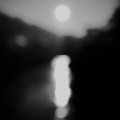Leica M10-R
-
Recently Browsing 0 members
- No registered users viewing this page.
-
Similar Content
-
- 50 replies
- 3,601 views
-
- 17 replies
- 2,507 views
-
- 61 replies
- 11,740 views
-
- 64 replies
- 3,243 views
-
- 1 reply
- 426 views
-





Recommended Posts
Join the conversation
You can post now and register later. If you have an account, sign in now to post with your account.
Note: Your post will require moderator approval before it will be visible.